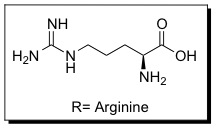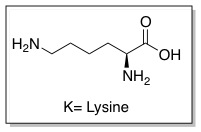Brittany deRonde/Sandbox 1
From Proteopedia
(→'''My Research Interest''') |
(→'''My Research Interest''') |
||
| Line 18: | Line 18: | ||
== '''My Research Interest''' == | == '''My Research Interest''' == | ||
| - | As part of the [http://www.pse.umass.edu/gtew/index.html Tew Research Group] | + | As part of the [http://www.pse.umass.edu/gtew/index.html Tew Research Group] in the [http://www.pse.umass.edu Department of Polymer Science and Engineering] at the University of Massachusetts, Amherst, I am interested in the design of Tat-inspired CPPs for drug and gene delivery. Using functionalized oxanorbornene derivatives as monomers, ring opening metathesis polymerization (ROMP) is performed using Grubbs' 3rd generation catalyst to synthesize cationic CPP mimics. By tuning the functionalization of the monomer structures and the resulting CPP molecular weights, cellular uptake and cell viability can be optimized. |
== '''References''' == | == '''References''' == | ||
Revision as of 22:49, 15 December 2011
One of the CBI Molecules being studied in the University of Massachusetts Amherst Chemistry-Biology Interface Program at UMass Amherst and on display at the Molecular Playground.
Contents |
Introduction
HIV Tat, or simply Tat, is a human immunodeficiency virus (HIV) gene that regulates transcription of HIV dsRNA. Tat, which stands for trans-activator of transcription, contains 86 amino acid residues in its sequence.
|
Cell Penetrating Peptides
Cell penetrating peptides (CPPs) are proteins with the ability to cross cellular membranes and facilitate the uptake of various cargo, such as small molecules, siRNA, and small DNA fragments. Such cargo can be associated via covalent or non-covalent interactions. Tat is considered a CPP because it contains a protein transduction domain (PTD). PTDs are cation-rich sequences found in proteins, usually containing Lysine or Arginine.
These sequences enable favorable interactions with cellular membranes that help them to enter cells. The PTD sequence in Tat is YGRKKRRQRRR (amino acid residues 47-57), which is Arginine-rich. This 11 amino-acid sequence is now referred to as the TAT peptide, and has be shown to have improved cellular uptake compared to Tat. The mechanism of uptake is still highly debated in the literature.
My Research Interest
As part of the Tew Research Group in the Department of Polymer Science and Engineering at the University of Massachusetts, Amherst, I am interested in the design of Tat-inspired CPPs for drug and gene delivery. Using functionalized oxanorbornene derivatives as monomers, ring opening metathesis polymerization (ROMP) is performed using Grubbs' 3rd generation catalyst to synthesize cationic CPP mimics. By tuning the functionalization of the monomer structures and the resulting CPP molecular weights, cellular uptake and cell viability can be optimized.


